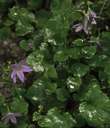PlantShare
Sign up for PlantShare
As a member of PlantShare, you will be able to:
- Upload photos of plants to share with others
- Create checklists of plants you want to keep track of
- Publish the location of the plants you have seen on your own map
- Ask one of our expert botanists questions Sign Up
Sightings Locator
Ask the Botanist
Our ace botanists are here to help you identify wild New England plants and to answer questions about their ecology and conservation. When posting a question, please provide the location, habitat (e.g. river, mountain, woodland), and photographs of the plant.
Everyone can read the answers, but only logged-in users can ask questions. Log in to ask a question.
Recently answered questions
-

- Question
- Help identifying this plant in our yard. Shady location, NW Connecticut.
- Answer
- Dear Don, good morning. Please forgive the long delay in responding, but it has taken a long time to determine which species you photographed. The plant is likely Campanula poscharskyana (Serbian Bellflower). This species has not been documented as "wild" in New England before. If you feel this plant is naturalized (i.e., growing outside of cultivation), I would appreciate communicating with you by email about this and possibly including it in the flora. I can be reached at ahaines@nativeplanttrust.org, thank you in advance for your help. (Monday, 24 November 2025)
-




- Question
- Is this tree located in Benson, VT green ash (F. pennsylvanica)?
- Answer
- Dear mmchugh, good morning. The plant certainly looks like Fraxinus pensylvanica. The pubescence of the branchlets and leaves are good identifying characters, as are the lateral leaf scars that are not strongly concave on the distal (i.e., upper) margin. Fraxinus nigra would often have another pair of leaflets (or more) and would show sessile (i.e., unstalked) leaflets. Best wishes. (Tuesday, 28 October 2025)
-
- Question
- I posted a question earlier about a plant that I thought could be Roseroot. Looking carefully at the plant and the flowers (photos were posted earlier), I think I was wrong and that the plant might be Narrow leafed bush clover, Lespedeza angustifolia. Close look at the fresh flowers, they seem to be cream colored and there are purple spots. And the fuzzy leaves seem to be in three leaflets when they are pulled away from the stalk. And it’s a local plant, not an unusual one. Carol Knox
- Answer
- Dear Carol, good morning again. You are in the correct genus, but Lespeza angustifolia has very narrow leaflets and typically occurs on coastal plain pond shores (i.e., in a specialized habitat). The plants are more likely Lespedeza capitata or a hybrid with that species. Best wishes. (Tuesday, 28 October 2025)
More recently answered questions »




















